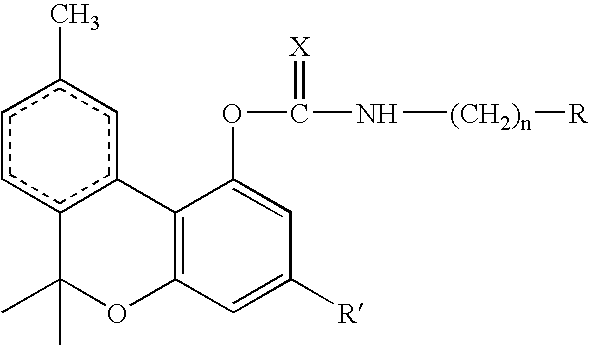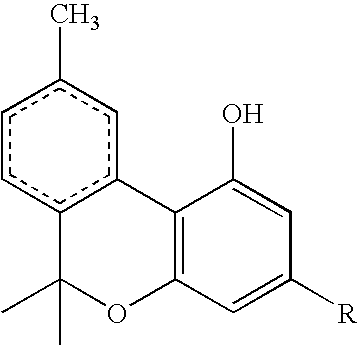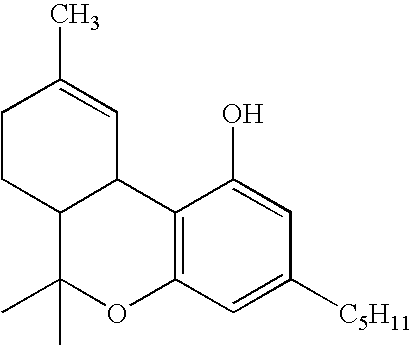Separation of tetrahydrocannabinols
a technology of tetrahydrocannabinol and tetrahydrocannabinol, applied in the field of tetrahydrocannabinol, to achieve the effect of rapid hydrolysis
- Summary
- Abstract
- Description
- Claims
- Application Information
AI Technical Summary
Benefits of technology
Problems solved by technology
Method used
Image
Examples
Embodiment Construction
[0017] The aromatic group of the isocyanate or isothiocyanate reagent and intermediate product can be a phenyl group or a naphthyl group, optionally carrying one or more nuclear substituents independently selected from halo, cyano, sulfonate, carboxylate, carboxylic acid, aldehyde, keto, nitro, tertiary amino, trichloromethyl and trifluoromethyl. When benzyl is chosen, i.e. n=1 of formula:
or benzyl isothiocyanate, with the result that the benzene ring is linked to the carbamate group through the intermediary of a methylene group, electron-withdrawing substituents on the benzene nucleus are not necessary. When the benzene or naphthalene ring links directly to the carbamate group, i.e n=0. one or more electron withdrawing groups should be present for best results. The crystallizability of the carbamate compound, on which the operation of the process of the invention depends, is believed to derive from the hydrogen bonding of the C═O or C═S and N—H groups of the carbamate structure,...
PUM
| Property | Measurement | Unit |
|---|---|---|
| solution | aaaaa | aaaaa |
| chemical formula | aaaaa | aaaaa |
| molecular structure | aaaaa | aaaaa |
Abstract
Description
Claims
Application Information
 Login to View More
Login to View More - R&D
- Intellectual Property
- Life Sciences
- Materials
- Tech Scout
- Unparalleled Data Quality
- Higher Quality Content
- 60% Fewer Hallucinations
Browse by: Latest US Patents, China's latest patents, Technical Efficacy Thesaurus, Application Domain, Technology Topic, Popular Technical Reports.
© 2025 PatSnap. All rights reserved.Legal|Privacy policy|Modern Slavery Act Transparency Statement|Sitemap|About US| Contact US: help@patsnap.com



